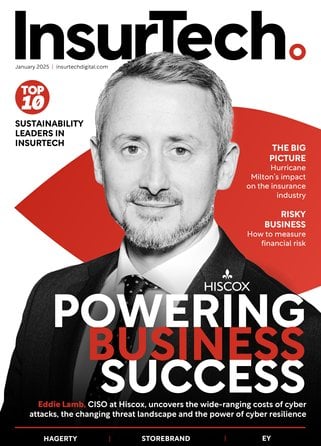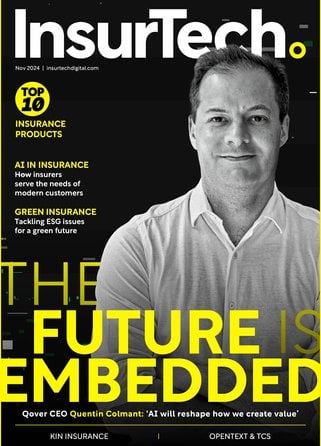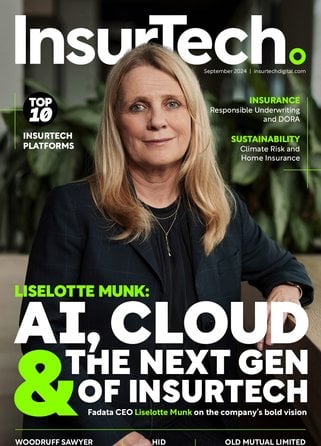Capgemini: Demographic Shifts Force P&C Insurers to Evolve

The global property and casualty (P&C) insurance industry faces unprecedented transformation as demographic shifts reshape risk landscapes and business models, according to the World Property and Casualty Insurance Report 2025 from Capgemini.
The report highlights that by 2050, for the first time in human history, seniors will outnumber youth globally, excluding Africa. The population aged over 60 will grow by 72%, while those under 20 will decline by 16%.
This demographic transition drives three fundamental changes: an aging population increasing the dependency ratio, a higher concentration of urban dwellers creating unprecedented risk hotspots, and evolving consumer priorities shifting towards experiences rather than possessions.
“In a historic first, senior citizens will outnumber youth globally by 2050 – excluding a relatively young Africa.
“The ageing population will drive urbanisation and influence evolving consumer preferences; as a result, insurance structures will change across risk, protection, and service delivery,” says Kartik Ramakrishnan, CEO of Capgemini's Financial Services Strategic Business Unit.
Risk Landscape Evolution
The dependency ratio – which measures the proportion of seniors (65+) relative to the working-age population (15-64) – will rise from 16% today to 26% by 2050.
This represents a 63% increase, meaning that for every 100 working-age people, there will be 26 seniors to support instead of 16.
Urban concentration compounds these challenges, with nearly 70% of the global population expected to live in urban centres by 2050, up from 58% today.
Almost half of urban dwellers will be over 50 years old, creating concentrated risk pools that require new assessment approaches.
Consumer behaviour is shifting as well. The Capgemini Voice of the Customer Survey found that 45% of consumers plan to increase spending on experiences rather than physical goods, while 70% do not intend to change their housing situation – neither buying larger homes nor transitioning from renting to owning.
“The commercial insurance market is evolving with a shift from tangible assets, like factories and warehouses, to intangible ones, such as data and intellectual property,” says Matthew Jones, Head of Ventures at MS Transverse, the innovation arm of MS&AD Insurance Group.
“MGAs and specialised insurers are at the forefront of this transformation by deeply understanding niche risks, customising policies, and providing services that align with the unique needs of modern businesses.”
Business Line Impact
These demographic shifts will impact all major P&C insurance business lines differently, with commercial lines projected to grow at 4.4% annually through 2050, outpacing the 3.3% growth rate for personal lines.
In auto insurance, aging populations drive changing mobility patterns. Older consumers typically drive less frequently, retain vehicles longer, and increasingly rely on alternative transportation.
This gradually transfers risk from individual drivers towards vehicle manufacturers and service providers.
“By 2050, the rise of autonomous technology will shift auto liability from individuals to manufacturers, disrupting motor insurance fundamentals,” says Joeri Jedeloo, CIO of P&C and Income Insurance at NN Group.
“Risk assessment will pivot from driver behaviour to real-time vehicle performance and system reliability, driving commercial coverage dominance while personal lines decline.”
For property insurance, aging-in-place trends and smaller family sizes transform protection needs.
Older homeowners require solutions focusing on accessibility and support to enable independent living, while the rise in single or two-person households drives demand for smaller dwellings with different risk characteristics.
Liability coverage faces new exposures as workforce aging increases workplace injury potential and drives automation adoption.
“As technology evolves, liability will increasingly shift from individuals to manufacturers,” notes Sam Zhang, Chief Operations Officer at Zurich Hong Kong.
“Autonomous systems and AI-driven processes will require companies to take on more responsibility for risks traditionally borne by individuals.”
To succeed in this transformed landscape, insurers must balance immediate performance with long-term positioning.
This requires reassessing geographic strategy based on differential aging rates, enhancing operating models through automation and generative AI to compensate for expertise shortages, and strengthening risk management capabilities to address demographic portfolio shifts.
Make sure you check out the latest industry news and insights at InsurTech and be part of the conversation at our global conference series, FinTech LIVE.
Discover all our upcoming events and secure your tickets today.
InsurTech is a BizClik brand
Featured Articles
Pipe’s underwriting model sees 98% offer acceptance globally, expanding its reach to new markets with seamless financial solutions
Absa Life implements Sapiens suite across funeral business as foundation for AI-driven expansion
Markel's fintech insurance chief warns of rising synthetic fraud as 79% of UK firms lose £500K+, with new regulations shifting liability to providers




